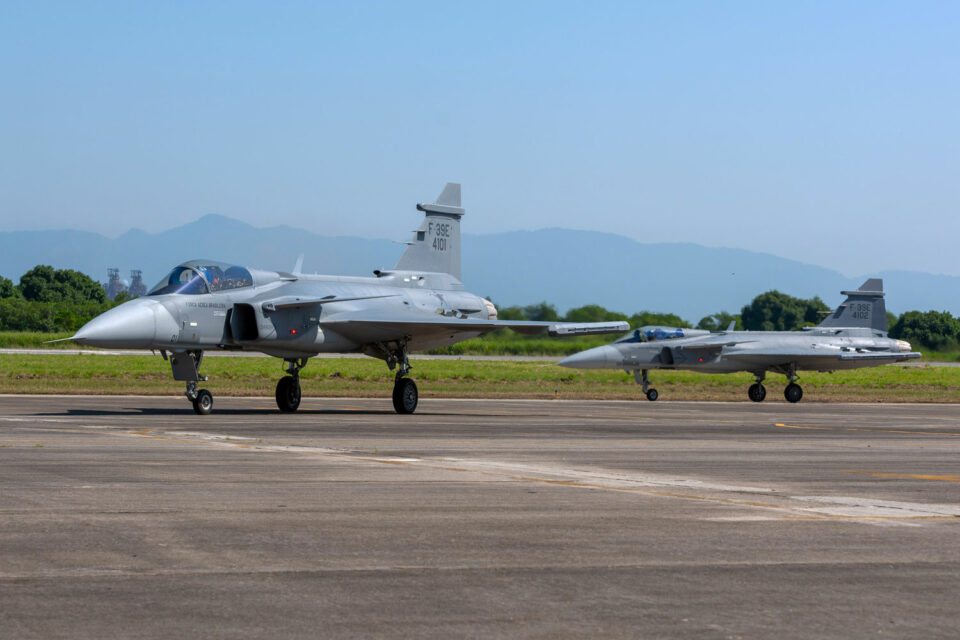Developed in the cold of Sweden, the Gripen fighter experiences a new operational environment in Brazil, an equatorial country, where temperatures exceed 40ºC even in winter.
The Brazilian Air Force (FAB) ordered 36 Gripen E/F fighters and already has seven of them in operation. Furthermore, Saab, together with Embraer, its partner, has an eighth aircraft, registration FAB 4100, being used in development and certification campaigns in Brazil.
Recently, the two companies sent the Gripen E 4100 to the northern region of Brazil, where the immense Amazon rainforest is located.
Follow Air Data News: WhatsApp | Google News | Instagram | LinkedIn | Twitter | Facebook
The fighter operated from the Belém Air Base, remaining in the region for 20 days, where it experienced temperatures of 35ºC and humidity of up to 85% at sea level.
There were more than 12 hours of flights in 10 training missions in extreme weather conditions.

Task passed on to Embraer
“The Gripen was based at the Belém Air Base, where ground support and teams from Saab and Embraer were located. After takeoff, the aircraft headed towards a test area over the sea near Salinópolis city, approximately 160 km from Belém. We set up a telemetry station at that location to collect all flight data”, explained Dalton Leite, Embraer engineer responsible for the campaign.
According to the development team, the tests were carried out to evaluate the performance of all systems in extremely hot and humid conditions, ensuring adequate cooling of the equipment, pilot comfort and the general behavior of the aircraft when inserted in that environment.

“Despite the challenging weather conditions and the sudden change in meteorology throughout the day, the results obtained demonstrate that Gripen can operate without weather restrictions from any location in the northern region,” said Martin Leijonhufvud, head of the Gripen Flight Test Center. Gripen (GFTC) from Saab.
All tasks were passed on to Embraer, which, within the agreement reached with the FAB, will improve its expertise in this area.
“The tests involved the work of approximately 35 people, divided between Brazilians and Swedes, and were fundamental in further strengthening the partnership between Saab and Embraer. They also prepared our technicians and engineers to carry out this type of work without Saab’s mentoring,“ added Leite.
Transonic flights
In addition to flights in hot and humid environments, the team evaluated Gripen E at transonic speeds, that is, around the speed of sound.
“The transonic flights were carried out to evaluate fighter and engine performance at lower altitudes, allowing the team to measure heat build-up and structural stresses in the aircraft,” explained Jakob Högberg, Saab’s chief test pilot.

In addition, the fighter underwent radar altimeter tests, which includes ground proximity warning (GPWS), precision anti-collision equipment for low-altitude flights.
To do this, it was necessary to fly in bands between 200 meters and 500 meters above the forest in order to validate the accuracy of the radar altimeter measurements in that environment.
The tests also involved flights with external payload configurations, such as IRIS-T and Meteor missiles, as well as fuel tanks.
According to Saab, the tests were completed successfully.

